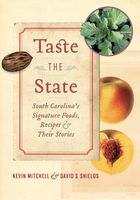Advertisement
Dutch Fork
Appears in
By Kevin Mitchell and David S. Shields
Published 2021
(Cucurbita moschata v. Dutch Fork)
A tan-colored lobed pumpkin grown in the Dutch Fork area around Newberry since the early nineteenth century, this ancient vegetable has the diversity of shape, size and color (it sometimes shows a yellow skin) that attests a Native origin. Circumstantial evidence suggests this is the descendent of the Cherokee pumpkin grown in the early eighteenth century in the Pumpkintown area of Pickens County. The multitudes of pumpkin vines skirting the Oolenoy River there, planted by the Cherokee living at UWharrie village, gave rise to the name. When the Cherokee were dispossessed of this land in 1791 as punishment for their alliance with Great Britain during the American Revolution, land speculator Cornelius Keith settled and named Pumpkintown. He is, perhaps, responsible for the spread of pumpkin seeds into the midlands of South Carolina, for he was a trader as well as a land shark.



